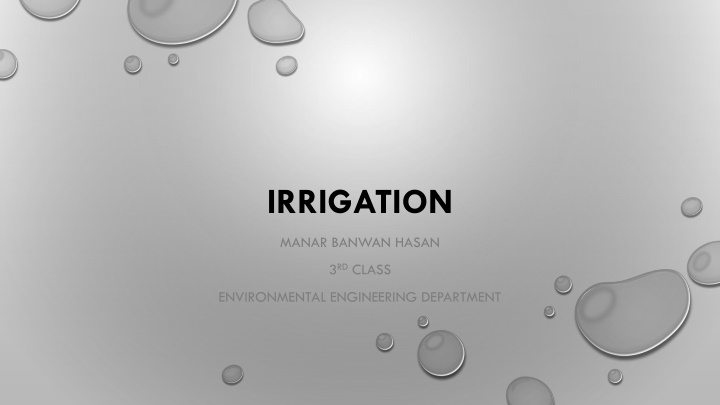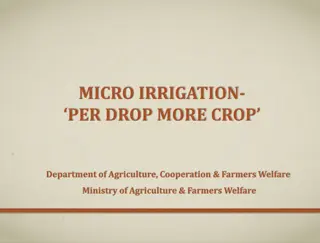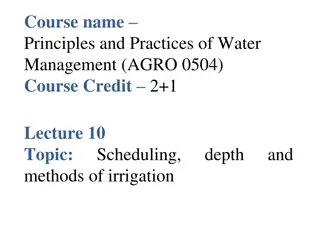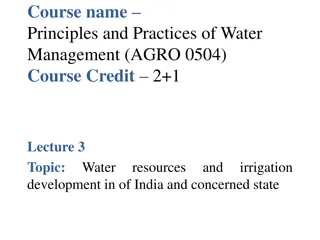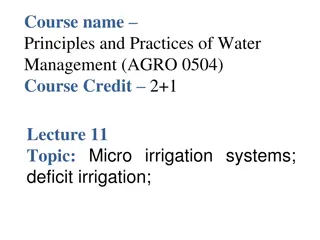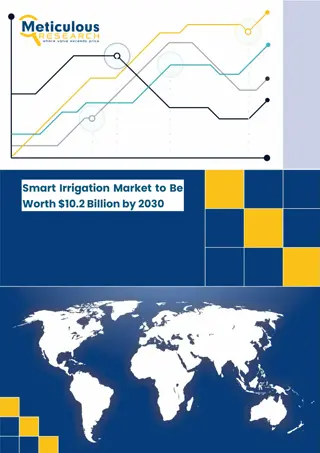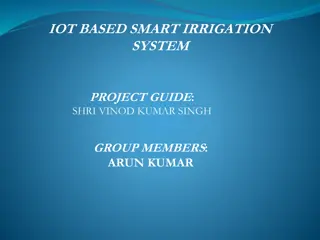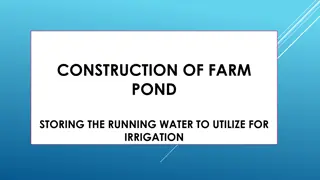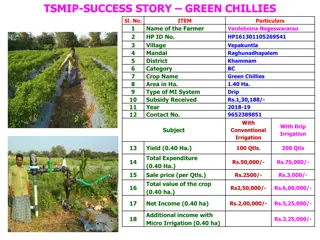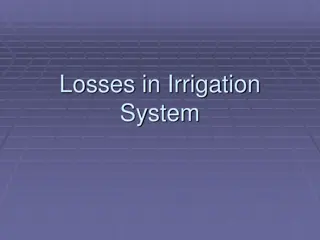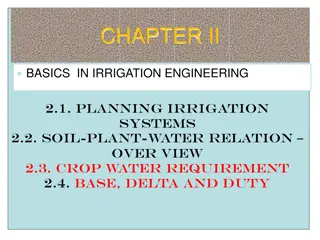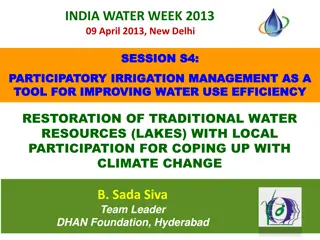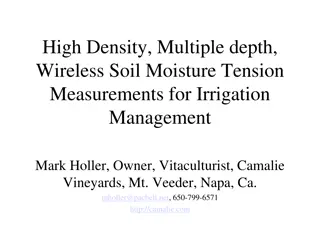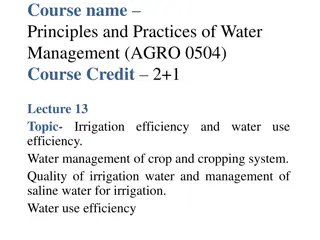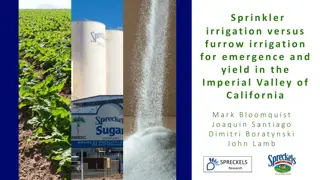IRRIGATION
The content covers various water sources crucial for plant growth, including irrigation, precipitation, atmospheric water, floodwater, and groundwater. It discusses the characteristics necessary for beneficial precipitation, the significance of atmospheric water, and the impact of floodwater and groundwater on plant growth. The information highlights the importance of different water sources in supporting healthy plant development and agricultural practices.
Download Presentation

Please find below an Image/Link to download the presentation.
The content on the website is provided AS IS for your information and personal use only. It may not be sold, licensed, or shared on other websites without obtaining consent from the author.If you encounter any issues during the download, it is possible that the publisher has removed the file from their server.
You are allowed to download the files provided on this website for personal or commercial use, subject to the condition that they are used lawfully. All files are the property of their respective owners.
The content on the website is provided AS IS for your information and personal use only. It may not be sold, licensed, or shared on other websites without obtaining consent from the author.
E N D
Presentation Transcript
IRRIGATION MANAR BANWAN HASAN 3RDCLASS ENVIRONMENTAL ENGINEERING DEPARTMENT
PRECIPITATION TO BE OF GREATEST BENEFIT, PRECIPITATION SHOULD HAVE THE FOLLOWING CHARACTERISTICS: 1. AMOUNTS SHOULD BE SUFFICIENT TO REPLACE MOISTURE DEPLETED FROM THE ROOT ZONE. 2. FREQUENCY SHOULD BE OFTEN ENOUGH TO REPLENISH THE SOIL MOISTURE BEFORE PLANTS SUFFER FROM LACK OF MOISTURE. 3. INTENSITY SHOULD BE LOW ENOUGH SO THAT WATER CAN BE ABSORBED BY THE SOIL.
ATMOSPHERIC WATER OTHER THAN PRECIPITATION THE ATMOSPHERIC CONDITIONS WHICH GENERALLY PREVAIL TO MAKE THIS SOURCE OF WATER SIGNIFICANT ARE: 1. CONSIDERABLE DEW FORMATION. 2. FOG AND CLOUDS. 3. HIGH HUMIDITY.
FLOOD WATER FLOOD WATER IS SIMILAR IN SOME RESPECTS TO IRRIGATION WATER, BUT IT IS NOT SUPPLIED BY MAN. AS FLOODS PASS OVER THE SURFACE OF THE LAND, WATER IS ABSORBED BY THE SOIL AND STORED FOR SUBSEQUENT USE BY PLANTS
GROUND WATER GROUND WATER IS WATER BENEATH THE SOIL SURFACE WHEN VOIDS IN THE SOIL ARE SUBSTANTIALLY FILLED WITH WATER. UPWARD MOVEMENT OF GROUND WATER BY CAPILLARITY FROM THE WATER TABLE INTO THE ROOT ZONE CAN BE A MAJOR SOURCE OF WATER FOR PLANT GROWTH. 1) IF GROUND WATER IS WITHIN THE NORMAL ROOT ZONE IS DEFINITELY RESTRICTS PLANT GROWTH. 2) IF GROUND WATER IS TOO NEAR THE SURFACE ABILITY TO ECONOMICALLY PRODUCE MOST CROPS BECOMES ALMOST NIL. 3) HOWEVER A WATER TABLE WITHIN THE LOWER PORTION OF THE ROOT ZONE SUPPLY A CONSIDERABLE AMOUNT OF WATER AND THERE BY REDUCE THE COST OF IRRIGATION
